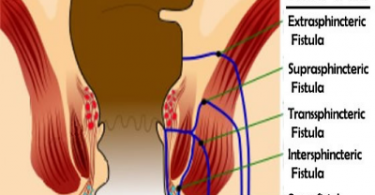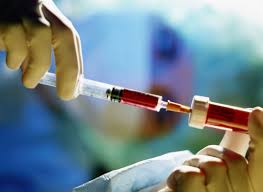ABSTRACT: Eye is the most vital sense organ of the body. In spite of tremendous research work going on world over, there are many eye conditions where there is no satisfactory treatment available in modern medicine. Homeopathic medicines act well not only in simple eye disorders but also in so called incurable eye diseases as observed from clinical experience. However to achieve accuracy and gain confidence in practice, a physician should be familiar with different eye disorders, their investigations and use of eye examination equipment to assess the results of treatment apart from knowledge of homoeopathy. Understanding about the scope and limiatations of homoeopathy in ophthalmology will help the physician to inform the patient beforehand whether a particular ocular condition is amenable to homoeopathy and its probable outcome.
Keywords: Homoeopathy, limitations, ophthalmology, scope.
Introduction: Eye is one of the most vital organ of the body. In spite of tremendous research work going on worl over, there are many ocular conditions where there is no satisfactory treatment available in modern medicine. Homoeopathic medicines respond well not only in simple eye disorders but also in so called incurable eye diseases from my clinical experience in homooeopathic ophthalmology for last 25 years.
Now I will mention below list of ophthalmic conditions that respond well to homoeopathy and the limitations of homoeopathy in ophthalmology.
SCOPE OF HOMOEOPATHY IN OPHTHALMOLOGY:
1. Diseases of eyelids: – squamous blepharitis, stye, chalazion, allergic lid
oedema, ptosis, winking or frequent blinking, essential blepharospasm.
2. Diseases of lacrymal apparatus: – dry eye syndrome, epiphora,
dacryocystitis.
3. Diseases of conjunctiva :- bacterial and viral conjunctivitis, spring ,
b. catarrh or seasonal allergic conjunctivitis, phlyctenular conjunctivitis,
c. pterygium.
4. Diseases of cornea :- bacterial, viral or fungal keratitis even with
hypopyon, corneal abscess, keratoconus (conical cornea)
5. Diseases of uveal tract and sclera :- iris, iridocyclitis, episcleritis,
scleritis.
6. Errors of refraction :- progression of simple or childhood myopia,
pathological myopia, amblyopia, symptoms of asthenopia.
7. Diseases of ocular muscles :- ptosis, paralytic or non-paralytic squint,
ocular myasthenia, nystagmus.
8. Vireo-retinal diseases :- vitreous opacities, vitreous haemorrhage,
macular degeneration, diabetic retinopathy, central serous retinopathy,
optic atrophy.
9. Other diseases :- cataract, glaucoma, ophthalmic migraine.
10. Post-operative complications: – iridocyclitis, endophthalmitis,
subconjunctival and intr~ocular haemorrhages, allergy to local or
systemic allopathic medicines, posterior capsular opacification or after
cataract, corneal decompensation, cystoid macular oedema etc.
LIMITATIONS OF HOMOEOPATHY IN OPHTHALMOLOGY‘:
In following ocular conditions homoeopathy has a limited: role to play In their
management.
Congenital defects: – ptosis, microophthalmos, anisometropia, coloboma of iris
or choroid, congenital glaucoma.
Acute emergencies: – central retinal arterial occlusion, retinal detachment, acute
congestive stage of glaucoma, mature cataract.
Injuries : – mechanical injuries such as corneal decompensation after surgery,
subluxation of lens, perforating injuries, intra ocular foreign bodies. Chemical
injuries such as acid or alkaline burns of cornea or conjunctiva.
To achieve accuracy and gain a confidence in practice a physician should be familiar with the different ophthalmic diseases, their investigations and use of different eye examination instruments that help to assess the results of
homoeopathic treatment. Physician must have in-depth knowledge about homoeopathic materia medica and philosophy to decide about selection or medicine and its dosage. Understanding about the scope and limitations of homoeopathy in ophthalmology will definitely help the physician to inform the
patient beforehand whether a particular ocular condition is amenable to homoeopathy and if so what will be the probable outcome of treatment.
CONCLUSIONS:
From past experience I have observed that homoeopathy is useful in many curable and so called incurable eye diseases. However to achieve accuracy and gain confidence in practice, physician should have a sound knowledge of different
ophthalmic diseases, diagnostic investigations and use of eye examination instruments. Understanding about the scope and limitations of homoeopathy in ophthalmology helps the physician to inform the patient beforehand whether the
eye condition is amenable to homoeopathy and its probable outcome.
Now I will mention below in short few case studies that shows the usefulness of homoeopathy in ophthalmology.
Case 1. Chalazion : –
It is a localized painless swelling on the eyelid due to retention of meibomian secretion caused by obstruction of the duct of meibomian gland. In modern medicine surgery is the treatment of choice that includes either incision and curetting or excision. However there are chances of recurrence, if curetting is not done thoroughly. Similarly if chalazion is small and occurs in multiple then they are difficult to treat surgically. Many times patients are reluctant to go for surgery due to its fear and prefer homoeopathy.
Case study-
A male patient of 50 years age, working as an accountant noticed a swelling on
the right upper eyelid for 2 weeks. He was advised to undergo a surgical
treatment by ophthalmologist but was not willing for surgery.
On examination there was a localized swelling on upper eyelid near the inner
canthus. It was not tender but hard in consistency (figure 1). There were no
associated ocular conditions like blepharitis or refractive error.
Different medicines were mentioned in homoeopathy for chalazion in Boericke’s
repertory 1 and Moffat’s book on therapeutic in ophthalmology. 2 Out of these
medicines Conium maculatum was selected by taking into consideration localized
nature of chalazion and hardness of its consistency. It was given in 30C potency
and TDS dose for 2 weeks.
After two weeks of follow up, there was a reduction of size and hardness of
chalazion. So the same medicine was repeated in BO dose for next two weeks.
Patient reported after three weeks with no visible swelling but it was palpable to
finger, so medicine was continued. After three weeks of follow up swelling was
neither visible nor palpable (figure 2). Patient was contacted on phone after 4
months and there was no recurrence.
From my experience I have observed that .apart from silent staqe of chalazion,
homoeopathy also helps in relieving acute inflammatory condition of chalazion. So
homoeopathy helps to cure this local condition and avoids a surgical intervention.
Case 2. Phlyctenular conjunctivitis: –
It is an allergic reaction to endogenous bacterial protein or to worm infestation. It
leads to formation of whitish yellow raised nodule on bulbar conjunctiva near the
corneoscleral junction (limbus) with a conjunctival conqestion usually near the
nodule. In modern medicine systemic medicines are given if a’etiology is found,
otherwise only local antibiotic and steroid eye drops are prescribed, however there
are chances of recurrence. So a systemic homoeopathic treatment will be helpful
in these cases by taking into consideration aetiology and symptomatology in a
patient.
Case study-
A lady of 26 years of age noticed a raised spot in her left eye since 4 days and
redness with a yellowish bland discharge in the left eye from 10 days. There was
no itching in eye or any associated general complaints.
During eye examination there was a whitish yellow nodule in left eye on temporal
side of conjunctiva near the limbus wit a conjunctival congestion (figure 3). Her
physical examination and investigation reports revealed no abnormality.
Out of different medicines mentioned in Homoeopathy for phlycten, Pulsatilla
200C was selected by taking into consideration phlyctenular conjunctivitis in a
female with yellow bland discharge. Pulsatilla was prescribed four times a day.
After 5 days of follow up, no nodule was visible as well as there was a significant
reduction in conjunctival congestion and discharge. While after 1 week visit, there
was no conjunctival congestion and discharge (figure 4). Patient was contacted on
phone after 3 months and she reported no ocular complaints. This case
demonstrates that homoeopathy can resolve phlyctenular conjunctivitis completely
without any recurrence.
Case 3. Corneal stromal abscess: –
It is an abscess formation restricted to the stromal layers of cornea caused due to
some endogenous infection.
Case study-
A female of 68 years age came with complaints of redness in right eye from 10
days and a dull pain with foreign body sensation since 3 days. There was no
discharge from the eye or history of ocular injury.
On eye examination after lifting upper lid there was a ciliary congestion restricted
to upper quadrant of cornea with the formation of a corneal abscess spreading
from 11 to 12 0′ clock position (figure 5). Patient had no associated ocular disease
such as blepharitis, conjunctivitis etc. Her physical examination revealed no
abnormality.
Different medicines were mentioned in homoeopathy for corneal abscess. Norton
has stated in his book that” Hepar sulph is one of the most frequently indicated
remedies for ulcers and abscesses of cornea especially deep sloughing one.” 3
So Hepar sulph 200C was prescribed every 2 hourly for 2 days. It was given in
higher potency and repeated frequently so as to absorb the abscess quickly.
After 2 days of follow up pain and foreign body sensation in eye was reduced, so
medicine was continued. After 3 days there was no pain in eye but occasional
foreign body sensation and eye examination showed significant absorption of
abscess with a reduction of a ciliary congestion (figure 6). Medicine was
continued with OlD dose and after 4 days patient reported no foreign body
sensation and the abscess was further reduced (figure 7), so same medicine was
continued. After 7 days there were no complaints and the abscess was totally
absorbed (figure 8). Medicine was discontinued and patient was called for follow
up after 1 week but there were no signs and symptoms of abscess. Patient was
contacted after 1 month and after 1 year but no complaints was reported. This
documented case gives clear evidence that homoeopathy has cured a case of
corneal abscess.
Case 4. Dacryocystitis
It is an inflammatory condition of lachrymal sac caused due to obstruction of
nasolacrymal duct. Congenital dacryocystitis occurs due to incomplete
canalization of lachrymal system.
Case study-
A baby of 1 month age came with a swelling between right eye and nose with a
yellow discharge from same eye from 2 weeks. It was diagnosed as a
dacryocystitis by ophthalmologist and was given local antibiotic eye drops
however there was no relief. So’they came for homoeopathic treatment.
On examination, there was a swelling between inner canthus of right eye and
nose with a lid oedema and an erythematous skin over the sac. Swelling was
tender and after applying pressure over the sac and there was a regurge of
yellowish green discharge from lachrymal sac through lowerpunctum of eye.
Belladonna 200 C was given in TDS dose on same.’ day to get relief from
inflammation. From next day Pulsatilla 30C was given eve,ry 2 hourly by taking
into account inflammation of lachrymal sac with yellowish green discharge.
Parents were told to prepare medicine daily by dissolving 5 medicated globules of
size no. 30 in one fourth cup of water. While giving every dose they were advised
to dip a spoon in medicated water and to put it on the tongue of a baby.
After 2 days of follow up, there was reduction in swelling and erythema with
reduction of discharge. Same medicine was continued with the same dose and
after 3 days swelling was further reduced with no tenderness but discharge was
-c,
. whitish in colour from sac. So Natrum mur 30 was prescribed in OlD dose for next
5 days by taking into account inflammation of sac with whitish discharge and
obstruction of naso lachrymal duct as an aetiologieal factor. After 8 days there
was further reduction of swelling and white discha~e. After 12 days of further
medication there was a complete reduction of swelling and discharge from sac.
This case study has shown that homoeopathy can effectively control inflammation
of lachrymal sac in a baby of 1 month age. Giving a systemic allopathic treatment
at this age to control inflammation is probably a difficult job.
Thus above cases gives an idea that homoeopathy can
treat different ophthalmic cases quickly, effectively, safely and without any
recurrence, provided if medicines are selected by taking into consideration the
aetiopathogenesis of disease and symptomatology in a given case. Many times
there is a belief in society that allopathic medicines, surgery and laser treatment is
the only treatment to tackle different ophthalmic diseases. Similarly general
practitioners are also unaware about the fact that homoeopathy can work in
different ophthalmic cases.
Reading this article with documented cases will definitely help the students and
practitioners of homoeopathy to build a confidence in homoeopathy while dealing
with ophthalmic cases in their general practice.
1. Boericke W. Pocket manual of Homoeopathic Materia Medica with Repertory, 9th ed. New
Delhi: B. Jain Publishers; 1990: 639.
2. Moffat JL. Homoeopathic Therapeutics in Ophthalmology. New Delhi: B. Jain Publishers; 1995:
127.
3. Norton AB. Ophthalmic Diseases and Therapeutics, 3rd ed. New Delhi: B. Jain Publishers;
1987: 248.




